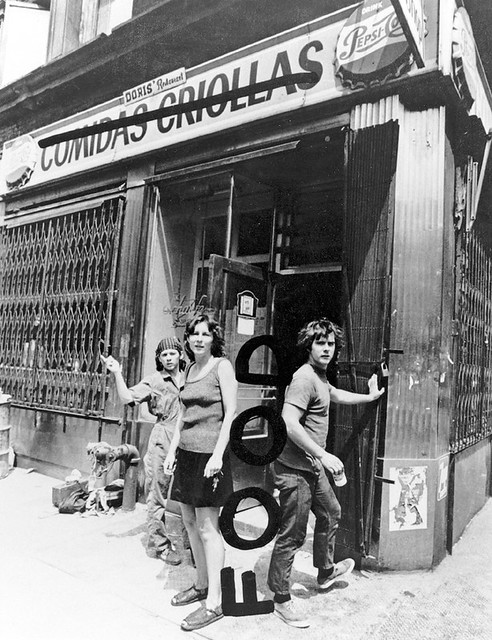Wow, check out this video of an exhibition (i think at the barbican center). Trish Brown is an interesting find for me.
here's what the video description says.
takes a video tour of Laurie Anderson, Trisha Brown and Gordon Matta-Clark's new exhibition at the Barbican. The three artists led a vibrant Manhattan art community through a period of economic crisis.Pioneers Of The Downtown Scene New York 1970s is the first exhibition to reevaluate this important body of work. The video is narrated by Curator Lydia Yee.The exhibition runs until 22 May 2011. Who are the Artists and where are the Exhibitions everyone's talking about in London? Check out ArtLyst.com
Some points here. Strangely, Gordon Matta-Clark is being shown so much. It is interesting to think that when I started Food #02 in the uk, I wanted to appropriate the piece based on very little information (just photographs and some brief references).
Now with this revival of Matta-Clark's work - I know more information on his work, practice and on Food.
After all, my appropriation series was kind of piss-take on some of the artists and artworks.
However, doing Food #03 for 3 years, I can completely relate to Matta-Clark in a whole different way. There is something so strangely familiar and I feel this odd affiliation. With Post-Museum and Food #03, I felt that Gordon were looking for the same things. from the interviews, we both believe the role and importance of art in life. People are equally confused about Food, was it art? It certainly (according to Jane Crawford) was a practical institution but was it art?
Does being art matters? We had a great time and that is important. All that exchanges, dialogs that bring about new imaginations, new fruition to initiatives and new possibilities. For me that was what the artwork (food / food #03) drew out for both the artist and the audience. It is a studio, an artwork, a social platform rolled into one. To paraphrase Buren's "the studio is where I make my work" when one refers to 'in-situ', therefore challenging the 'traditional' concept of the artist studio.
How do we show that cultural work later on? I am interested in how we can do that - how in retrospect, we can present an event, a happening, an incident, a time-context specific work or moment. That is important as also it allows the exhibition model which is quite a limited model at this moment but never the less an important model to address and challenge.
For an exhibition can 'put all the moments' together and one can look at it from a different way. Think a history museum - at worst it is an 'official' story of the subject while at best it challenges the perception and opens up new possibilities of the present through the past.
Guess that's why during the OPEN * Show, I tried installing certain projects which were developed or practiced with Food #03 and Post-Museum. Week was busy as hell - so no time to evaluate and talked to audiences about the works shown in the Show Room. Update on that soon. Got to sleep.

No comments:
Post a Comment